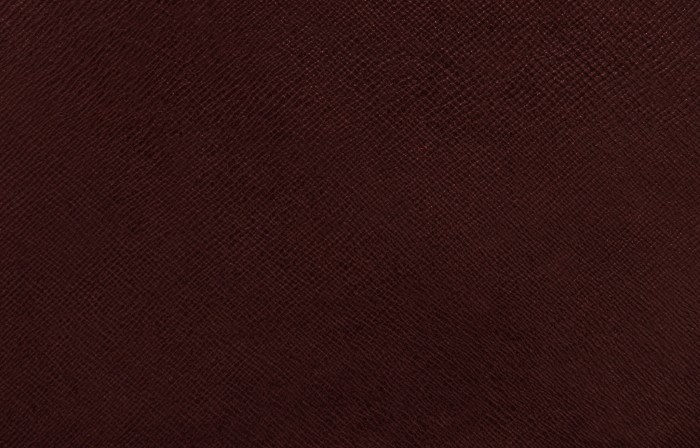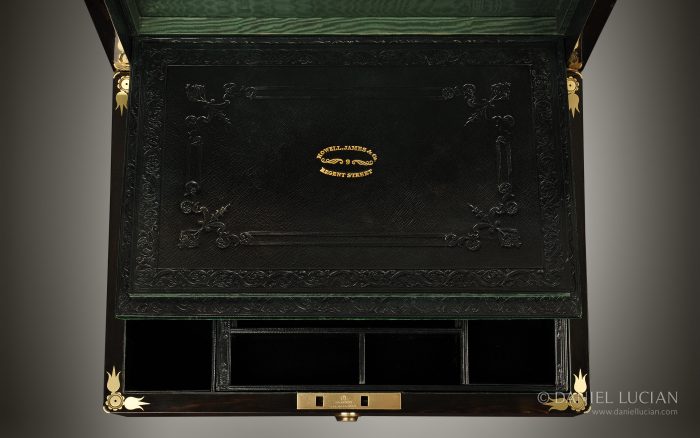Morocco Leather
Morocco leather was considered one of the finest varieties of leather due to its suppleness and softness, as well as its strength and resilience. Initially sourced from Moroccan goatskin, later sources, whilst often still being referred to as ‘Morocco’ leather, also came from North African sheepskin and split calfskin.
The leather was tanned and softened using Sumac leaves (obtained from shrubs or trees of the genus Rhus) and, depending on the preparation, the surface could acquire a natural, smooth, pebble-grain or straight-grain finish.
Morocco leather was extensively used for the interiors of dressing cases and jewellery boxes, especially for the covering of trays, wall and partition linings, letter wallets and mirror frames etc. During the late 18th century and throughout the 19th century, popular leather dye colours included red, burgundy, dark blue, purple and green.

Antique Morocco leather with natural grain.

 Price On Application
Price On Application